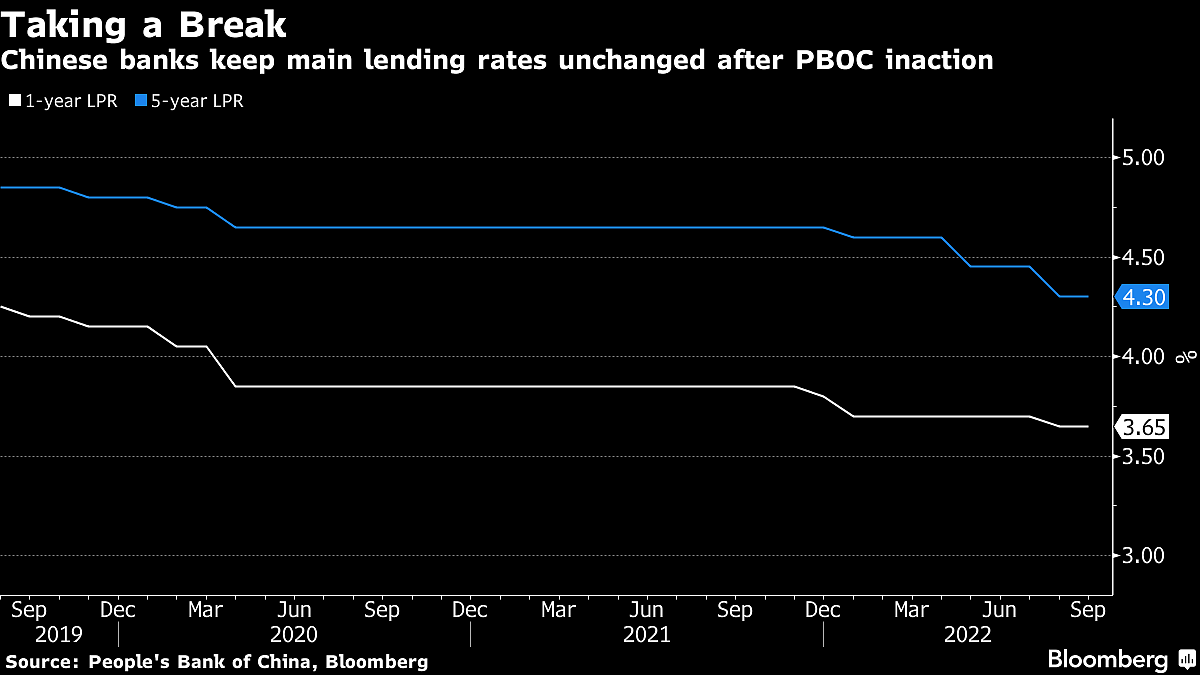China’s Central Bank Signals It Has Policy Space To Ease
China's real interest rates are "slightly lower" than the pace of potential GDP growth, the People's Bank of China says, adding to expectations it may resume rate cuts in coming months.

(Bloomberg) -- China’s current interest rates are “reasonable” and provide room for future policy action, the People’s Bank of China said, adding to expectations it may resume lowering rates in coming months.
Real interest rates in the country are “slightly lower” than the pace of potential economic growth, the central bank said in a statement posted late Tuesday on its verified WeChat account. Such a situation helps make debt sustainable and provides the government with “extra” policy scope, it said.
The current levels of interest rates are “the best strategy that leaves room for the future,” the PBOC said. The statement was the fourth in a series of articles published by the PBOC since the middle of September explaining its policy.

The central bank last week refrained from cutting its key interest rates as it defended a depreciating yuan. Banks followed by keeping their main lending rates unchanged on Tuesday, although speculation is growing they may ease in coming months.
China Expected to Cut LPR Further to Boost Economy: State Media
Economists say the PBOC’s pause was partly because policy makers are assessing the impact of previous easing measures. Further policy support is still necessary, they argue, since the economy is being dragged down by repeated Covid outbreaks, a property market slump and slowing exports.
“The PBOC tried to say that even though US interest rates are rising, it could cut rates again if necessary,” said Louis Kuijs, chief Asia economist for S&P Global Ratings.
China’s lending rates are roughly in the 4%-5% range while time deposit rates are at 1%-2%, according to the PBOC’s statement. The economy grew 2.5% in the first half of this year after expanding 8.1% last year.
Analysts have been steadily downgrading China’s growth forecasts this year as economic risks mounted. The Asian Development Bank was the latest to do so, projecting 3.3% expansion compared with 4% previously. That’s lower than the consensus of 3.5% in a Blomberg survey of economists and far below Beijing’s official target of around 5.5% announced in March.
The PBOC said in the statement that it will further release the benefits of the loan prime rate reform and let the market-based adjustment of deposit rates “play an important role.”
China’s biggest banks recently lowered their benchmark deposit rates across the board for the first time since 2015, a move designed to help them boost lending to shore up economic growth.
The central bank has cut the rate on its one-year policy loans, known as the medium-term lending facility, twice this year already, driving bank lending rates down. Even so, total credit extended to the economy in July hit a record low and only mildly recovered last month, reflecting weak demand from businesses and households.
“When confidence and demand for credit is low, fiscal stimulus works better than further monetary easing,” Kuijs said. Fiscal incentives to households, which have been limited so far, could be effective in supporting growth, he said, citing the boost to car sales after the government reduced the purchase tax on vehicles.
(Updates with comment from economist starting in the sixth paragraph.)
More stories like this are available on bloomberg.com
©2022 Bloomberg L.P.

